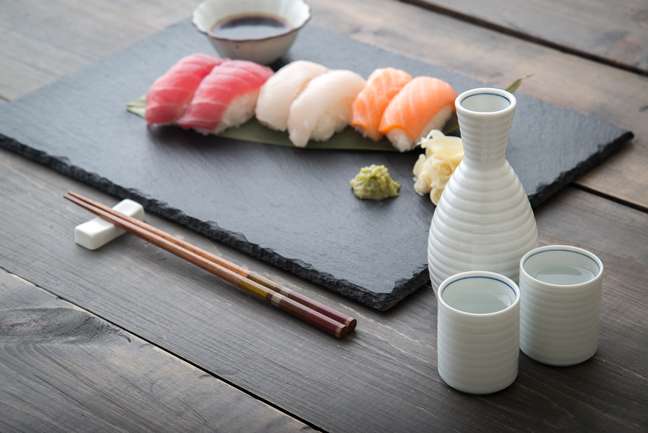Light and delicate, Japanese cuisine can be paired with beers, wines and beverages without losing the spotlight
It is not new that Brazil has incorporated oriental cuisine. Light and tasty, Japanese cuisine is characterized by the balance and contrast of flavors, usually paired with banchás or sake.
What few people know, however, is that it is possible to combine this type of food with beers, wines and even alcoholic drinks without hiding the protagonism of fish and seafood.

alcoholic beverages
Fatty fish, such as salmon and tuna, as well as fried fish are two common items in Japanese cuisine. Since they are soft foods on the palate, they can generate doubts in choosing a drink to accompany.
According to the bar chef and mixologist Adriana Pino, of Flora, the pairing takes place by similarity or contrast, and from this it is possible to combine any oriental dish with drinks.
“It’s worth mentioning that these fatty fish pair with citrus-based drinks like caipirinhas and margaritas, while shellfish, oysters and shrimp can be paired with drier, slightly bitter drinks like dry martini and eve,” says Adriana.
As for the carvery, Nicholas Fullen, partner-owner of Oguro explains that one way to combine the mode with alcoholic beverages is to keep an educational menu for those who will choose and will be willing to order only one drink to accompany the meal.
“I believe that ingredients similar to what you see on the table may be a way out for those who want to order just one drink in the rodízio. So drinks that contain ginger and even wassabi show the way forward,” he says.
beers
In addition to drink lovers, there are also those who don’t give up on good old beer when it comes to dining out.
With the aim of playing with versatility and nuances in his harmonies, brewer Junior Bottura, ambassador of priceless space, says that the idea of combinations is to create new flavors, textures and sensations.
“When it comes to Japanese food, it depends on the intention of the pairing. I like to bet on beers that have alcohol on the palate or a touch of citrus as an attribute, but that’s not necessarily a rule,” he explains.
Júlia Fraga, co-owner of the Âmbar brewery and the Tank Brew Pub, believes that the pairing is a way to enhance both the drink and the food, but it is important to analyze the context of the dish.
“I don’t think a beer has to be light to go with sushi, but it’s also pointless to serve a richly flavored drink and kill the delicacy of the fish,” he says.
The two, however, say that a good bet are carbonated beers, which make the drink carbonated and acquire a sensorial profile, that is, providing the human senses with elements such as aroma, flavor and texture.
Beers with this characteristic also have the ability to purify the palate, sharpening the senses and the will for the next piece. Pilsner, witbier, and German sour beers are just some of the options for those who want to bet on beer when eating sushi.
wines
Despite being constantly associated with pungent dishes, the wines can also accompany sushi and sashimi boats.
When thinking of Japanese food, the ideal is to look at the universes of whites and rosés, which tend to be lighter and more delicate. La Sommelière Suzana Barelli advises, in the case of rosé wines, to always pay attention to the color.
“Wines that have a more intense rosé indicate that the drink has more body. Light rosés tend to have less structure, less tannins present in the grape skin,” he explains.
There are also some basic rules that help with the combination. One of them is that dishes with fatty elements, with softer fish on the palate, require wines with higher acidity. Crustaceans, squid, shrimp and oysters are best paired with wines that have not been aged in oak barrels, and therefore are less complex in aromas and flavors, leaving the main role to food.
For those who are not willing to drink more than one glass with meals, the specialist recommends options that do not contrast with any of the dishes.
“I’d use brut sparkling wines. They usually go with most Japanese recipes,” he finally says.
+The best content in your email for free. Choose your favorite Earth Newsletter. Click here!
Source: Terra
Benjamin Smith is a fashion journalist and author at Gossipify, known for his coverage of the latest fashion trends and industry insights. He writes about clothing, shoes, accessories, and runway shows, providing in-depth analysis and unique perspectives. He’s respected for his ability to spot emerging designers and trends, and for providing practical fashion advice to readers.







